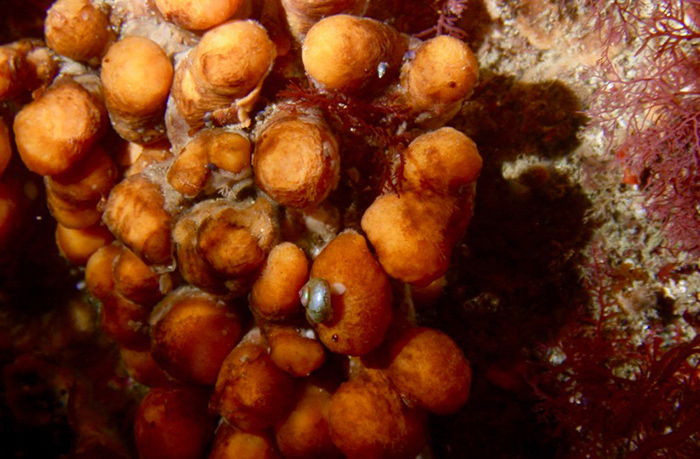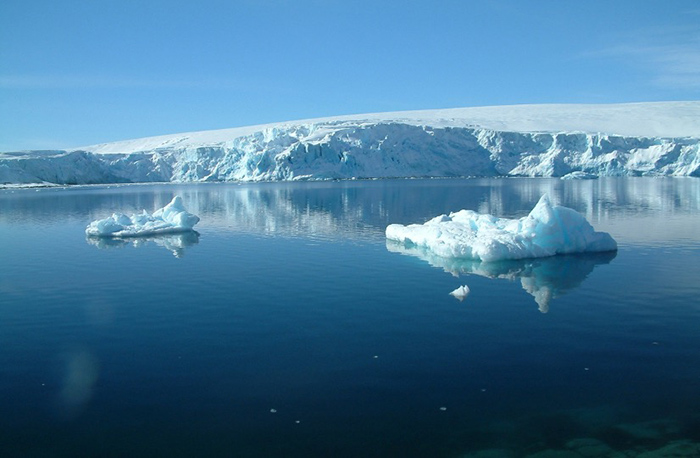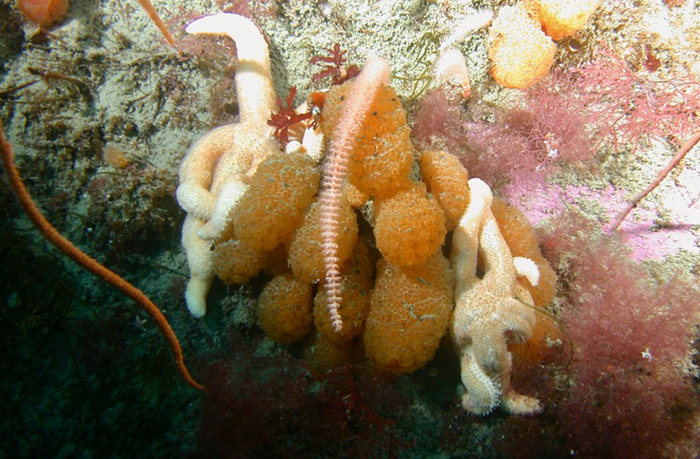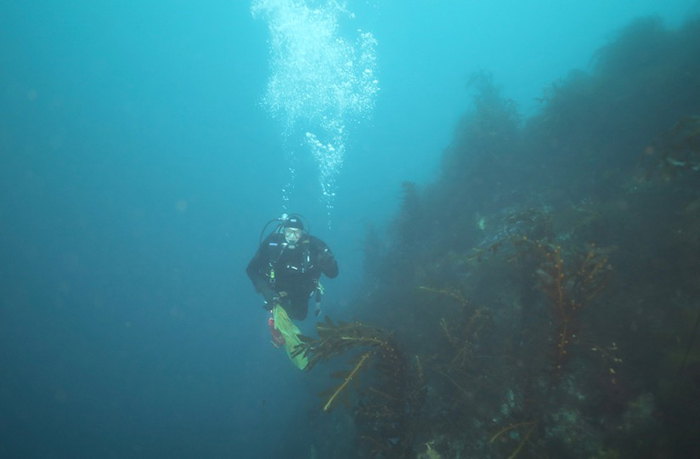Research Update: Within an Antarctic Sea Squirt, Scientists Discover a Bacterial Species With Promising Anti-Melanoma PropertiesA new study may have found a bacterial species with anti-melanoma properties.Posted December 28, 2021
A new study may have found a bacterial species with anti-melanoma properties. 
Photo Credit: Bill J. Baker, University of South Florida
Synoicum adareanum lives on the Antarctic sea floor and gets its nutrition from microorganisms and organic carbon in the seawater. This type grows in colonies with many individual lobes that are connected at their base. Its microbiome hosts a suite of different microorganisms, including a bacterium in the phylum, Verrucomicrobium, that produces a compound with anti-melanoma properties.
The recently published paper in mSphere describes strides made by scientists to successfully trace a naturally produced melanoma-fighting compound called “palmerolide A” to its source: a microbe that resides within a species of sea squirt common to the waters of Antarctica. To survive in the harsh Antarctic environment, sea squirts and other invertebrates have developed symbiotic relationships with diverse microbes with features such as bioluminescence and chemical defense agents. These compounds may have medicinal and biotechnological applications useful to humans in science and health. Learn more about the study from the Desert Research Institute's website |
Research Update: Within an Antarctic Sea Squirt, Scientists Discover a Bacterial Species With Pro...



For USAP Participants |
For The Public |
For Researchers and EducatorsContact UsU.S. National Science FoundationOffice of Polar Programs Geosciences Directorate 2415 Eisenhower Avenue, Suite W7100 Alexandria, VA 22314 Sign up for the NSF Office of Polar Programs newsletter and events. Feedback Form |




